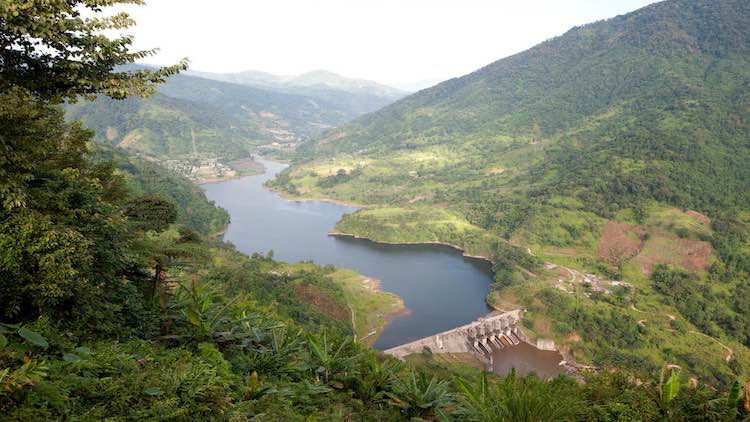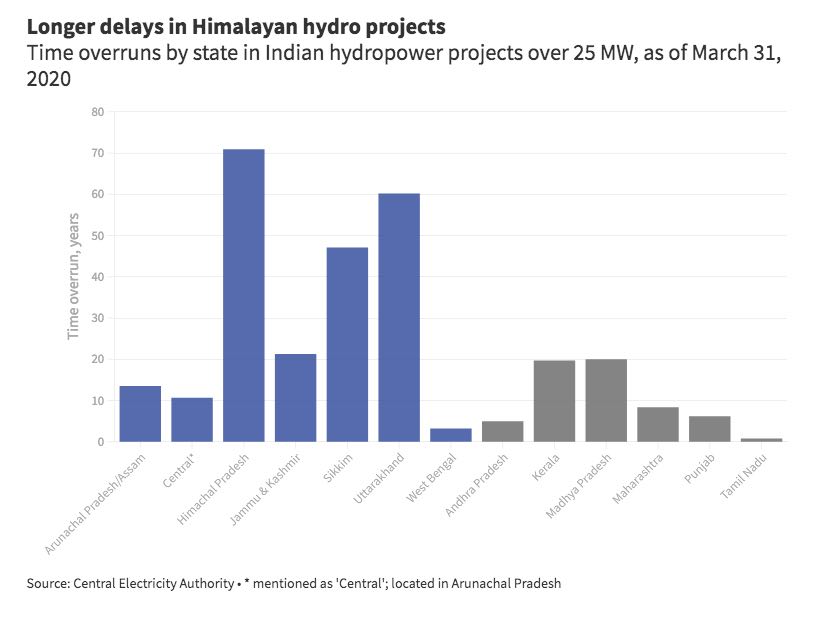Himalayan Dams Become Economic Burdens

By Rishika Pardikar/thethirdpole.net
On April 23, 2020, the Forest Advisory Committee (FAC) of India’s environment ministry met to deliberate the 3,097-megawatt Etalin hydropower project in the north-east state of Arunachal Pradesh.
The proposed dam is a joint venture between private company Jindal Power Ltd (JPL) and the Hydro Power Development Corporation of Arunachal Pradesh Ltd, a public sector undertaking. The minutes of the meeting show that the FAC did not to decide whether to approve the project but sought views from the Ministry of Power (MoP) with respect to three issues: the six-year delay to the project and change in the country’s energy plans during this time; the high tariff structure; and prioritising proposed hydro projects based on their adverse impacts on ecology. The Etalin hydropower project in Dibang Valley is one of over 160 dam projects planned in Arunachal Pradesh. It has attracted particular controversy over its impacts on wildlife and indigenous communities in the dense forests of north-east India. Concerns about time and cost overruns are not unique to the Etalin dam. These issues are common in hydropower projects, particularly in the Himalayan states of Uttarakhand, Himachal Pradesh, Arunachal Pradesh, Assam, Sikkim, Jammu and Kashmir, and West Bengal. According to the Central Electricity Authority’s (CEA) latest quarterly review (covering January-March 2020), many large hydropower projects under construction in these states have cost overruns as high as 200% and delays of up to 13 years.
The proposed dam is a joint venture between private company Jindal Power Ltd (JPL) and the Hydro Power Development Corporation of Arunachal Pradesh Ltd, a public sector undertaking. The minutes of the meeting show that the FAC did not to decide whether to approve the project but sought views from the Ministry of Power (MoP) with respect to three issues: the six-year delay to the project and change in the country’s energy plans during this time; the high tariff structure; and prioritising proposed hydro projects based on their adverse impacts on ecology. The Etalin hydropower project in Dibang Valley is one of over 160 dam projects planned in Arunachal Pradesh. It has attracted particular controversy over its impacts on wildlife and indigenous communities in the dense forests of north-east India. Concerns about time and cost overruns are not unique to the Etalin dam. These issues are common in hydropower projects, particularly in the Himalayan states of Uttarakhand, Himachal Pradesh, Arunachal Pradesh, Assam, Sikkim, Jammu and Kashmir, and West Bengal. According to the Central Electricity Authority’s (CEA) latest quarterly review (covering January-March 2020), many large hydropower projects under construction in these states have cost overruns as high as 200% and delays of up to 13 years.


Latest Videos
















